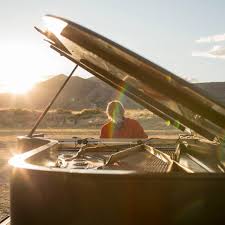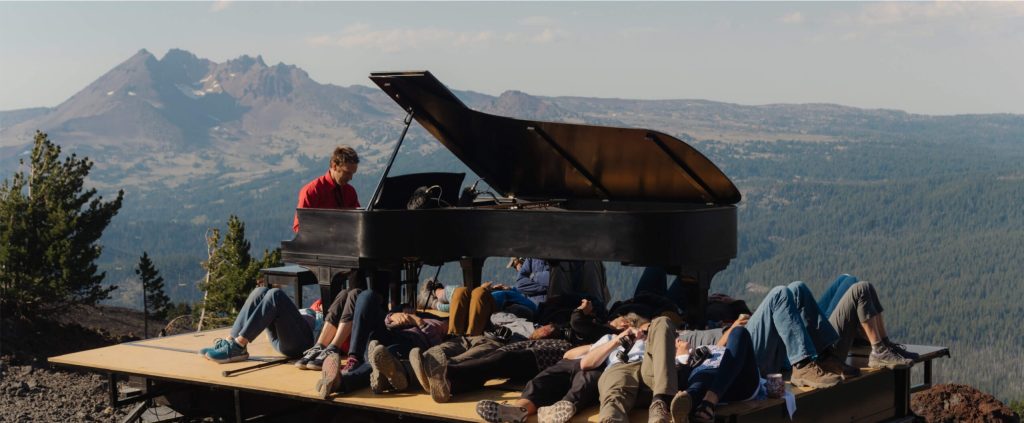
In today’s world, where urban landscapes often dominate, there’s something magical about experiencing the timeless beauty of classical music in the great outdoors. “In a Landscape: Classical Music in the Wild” is a one-of-a-kind event that brings together the elegance of classical compositions with the raw beauty of nature. As an event organizer, you have the incredible opportunity to curate an experience that will captivate music enthusiasts and outdoor adventurers alike.
In this blog, we’ll explore what makes “In a Landscape” such a special event, how to create a seamless experience for attendees, and why it’s an ideal fusion of music and nature. Whether you’re an organizer planning the event or someone looking to attend, you’ll discover why classical music in the wild is a cultural experience that stands out in today’s entertainment landscape.
1. What is “In a Landscape: Classical Music in the Wild”?
“In a Landscape” is a concept that brings classical music into natural, often unexpected, settings. Whether it’s a forest, a mountain range, or by the shores of a serene lake, this event invites attendees to experience the beauty of live classical performances amidst the breathtaking landscapes that inspire them.
Named after the famous piano piece “In a Landscape” by composer John Cage, the event embraces the idea of breaking down the traditional walls of concert halls. Instead of confined seating and formal dress codes, classical music in the wild allows listeners to immerse themselves in the music while surrounded by the sounds of nature.
For organizers, this event offers the unique challenge and opportunity of blending the grandeur of classical music with the serenity and unpredictability of outdoor environments.
2. The Perfect Setting: Choosing the Right Location
When planning an event like “In a Landscape: Classical Music in the Wild,” the location is key to the experience. The outdoor setting should not only complement the music but enhance it, creating a symbiotic relationship between sound and surroundings. Some ideal locations for such an event include:
- Forest Clears: A forest provides a natural amphitheater, where the sounds of the orchestra or solo performance can blend harmoniously with the sounds of wind rustling through the trees.
- Mountain Tops or Hillsides: Performing in a picturesque, elevated location offers breathtaking views, making the classical music feel even more majestic and expansive.
- Lakesides or Riverbanks: The calmness of water serves as a beautiful backdrop to the soothing tones of classical instruments. Reflections on the water can add a visually captivating aspect to the music.
- Historic Outdoor Spaces: Choosing locations with historical significance can further deepen the cultural experience for your audience.
Each of these settings has its own unique advantages, and selecting the perfect venue depends on the mood and atmosphere you wish to create. As the organizer, you should also consider logistical elements, such as access, safety, seating arrangements, and sound quality in open spaces.

3. The Importance of the Music: Curating the Right Classical Compositions
Classical music, with its emotional depth and rich history, is an ideal genre for the outdoors. However, as an organizer, it’s important to select pieces that enhance the setting and complement the natural environment. Some considerations include:
- Ambient Compositions: Choose pieces that are more atmospheric and meditative in tone. Works by composers like John Cage, Erik Satie, or even Philip Glass can blend well with the natural sounds around you, creating an immersive soundscape.
- Nature-Inspired Music: Look for classical pieces that reflect or evoke nature itself. The works of composers such as Beethoven, Vivaldi (especially The Four Seasons), or Debussy (with pieces like La Mer) can resonate deeply when performed in outdoor settings.
- Solo Performances vs. Full Orchestras: For smaller, more intimate gatherings, solo performances or chamber music may create a deeper connection with the natural surroundings. For larger events, orchestras or ensemble groups can produce a powerful and dynamic experience.
- Interactive Performances: You might also consider blending classical music with ambient soundscapes, allowing the natural environment to play a role in the music itself. Consider working with sound artists to incorporate nature sounds like birdsong, wind, or running water.
4. Ensuring a Seamless Experience: Logistics and Event Planning
While classical music in the wild offers a unique and transformative experience, planning such an event requires thoughtful consideration of logistics. Here are some tips to ensure that your attendees have a smooth and enjoyable experience:
- Sound Equipment and Acoustics: Outdoor acoustics can be unpredictable, so investing in high-quality sound equipment is crucial. Portable speakers or amplifiers should be carefully chosen to provide optimal sound clarity while maintaining the natural ambiance. You may also need to consider using microphones for certain instruments to ensure sound projection in open-air settings.
- Seating and Comfort: Depending on the location, attendees may be required to sit on the ground or bring their own portable seating. Providing comfortable seating options like picnic blankets, folding chairs, or benches can improve the experience, especially for those attending longer performances.
- Transportation and Access: The location should be accessible for all attendees. If the event is in a remote area, offering transportation options or clear signage for parking is essential. Shuttles or carpooling could also help ease the journey to and from the venue.
- Weather Planning: Nature is unpredictable, so it’s important to have a backup plan in case of inclement weather. Consider providing umbrellas, rain ponchos, or tent coverage for rainy days. It’s also wise to have indoor options on standby or the ability to reschedule in extreme conditions.
- Refreshments and Amenities: For longer events, consider offering food trucks, refreshments, or picnic areas. This can enhance the outdoor experience and ensure that guests feel comfortable throughout the performance.
5. Creating an Atmosphere of Relaxation and Connection
One of the most significant aspects of “In a Landscape: Classical Music in the Wild” is its ability to connect people with nature and each other through music. To create the right atmosphere, consider the following:
- Create a Welcoming Environment: Encourage attendees to relax and enjoy the experience by fostering a laid-back atmosphere. Allow them to wander freely, explore, or even bring their pets (if appropriate for the location).
- Engage the Audience: Offer pre-concert talks or post-performance discussions with composers, musicians, or nature experts. This interaction can deepen the audience’s connection to both the music and the environment.
- Emphasize Sustainability: Since your event takes place in nature, emphasize sustainability and environmental responsibility. Use eco-friendly materials for signage, promote waste-reduction practices, and educate your attendees on respecting the environment.
6. Promoting Your Event: SEO Tips for Event Organizers
To draw attention to your event, it’s crucial to have a strong online presence. Here are some SEO tips to help you promote “In a Landscape” and attract attendees:
- Targeted Keywords: Use keywords like “classical music in nature,” “outdoor classical performances,” “music festival in the wild,” and “John Cage music in the landscape” to help your event appear in search results when potential attendees are looking for unique outdoor musical experiences.
- Create Compelling Content: Share blog posts, event teasers, and behind-the-scenes footage that highlight the unique experience of listening to classical music in nature. Visuals of past events or promotional videos can help spark interest.
- Leverage Social Media: Use Instagram and Facebook to post stunning photos and videos from previous events, and encourage followers to share their experiences. User-generated content can increase visibility and engagement.
- Partner with Influencers: Reach out to influencers in both the classical music and outdoor adventure communities to spread the word. Influencers can amplify your message to an even larger audience.
Conclusion: A Uniquely Enchanting Event
“In a Landscape: Classical Music in the Wild” is more than just a concert; it’s an experience that merges the transcendent beauty of music with the tranquility of nature. As an event organizer, offering such an event requires careful planning and attention to detail, but the results are worth it. By choosing the right location, curating the perfect musical selection, and ensuring a seamless guest experience, you’ll create an unforgettable moment for your audience.
Don’t miss the chance to offer something truly unique—classical music in the wild is a perfect way to engage audiences and celebrate the beauty of both nature and music.
As always if you are looking for a great event to attend you can purchase tickets HERE.
Other Articles








